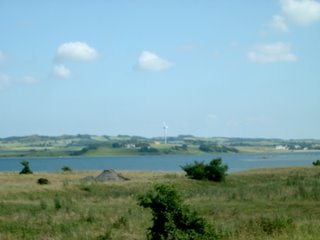
Many people who grew up in South Africa during the 1970s will remember being taught road safety by Daantjie Kat. Daantjie Kat films were shown in the early days of television and he visited our schools. The main rules of the road that were drummed into us were: “Keep left” and when crossing a road, “Look left, look right, then left again.” These rules were so ingrained into me that as an adult, I hardly had to think about them. Then I moved to Europe. It felt a bit strange the first time I got into the front right seat of a car and there was no steering wheel, but I coped with that. I even managed to quell my discomfort when we swung out onto the road, whilst driving on the right. However, when we drove at full speed anti-clockwise into a traffic circle, I had to close my eyes and grip the door handle for dear life! Little in life has seemed “normal” since then.
My son, who is four years old, recently started attending kindergarten. At kindergarten, the children are encouraged to learn through play. The children spend most of their day playing outdoors. There is very little in the way of formal lessons as in Denmark children only start primary school when they are, on average, six years old. Schooling in Denmark is compulsory for children from seven years old to sixteen years old. They have the option of attending pre-school from the age of five. This is very different from the pre-school my son was attending in England where he was already being taught basic writing and number skills in order for him to commence school at a very young age of four. I am very pleased that my son has been given an extra two years in order to simply enjoy being a child.
A weird phenomenon I’ve discovered is that every few months many Danes migrate to the German border towns like Süderlügum. We have done this twice since I’ve been living here. Why? To stock up on cheap booze, sweets and German meats. These German border towns have huge cash and carry type shops catering to the Danes. Each one virtually bursting at the seams with frenzied Danes, pushing along trolley loads of cheap beer, wine and bratwurst.
In South Africa and Britain, we are used to going to the butcher or supermarket and choosing neat little rump steaks or chump chops for our dinner. In Denmark, when you look into the supermarket fridges, you are confronted by huge hunks of cow or sheep or pig. Most immediately conjure up images of medieval meat feasts, or for SAffers, braais you can really get your teeth into!

I read some statistics a few days ago that Denmark is the third largest consumer of ice-cream in the world. This is not surprising. The ice-cream here is amazing! One of the most popular choices is a waffle cone, filled with three (or four!) scoops of different flavours, topped with vanilla soft serve, a fløde bolle (the English cutie pie chocolate) and stuff called “guf”. “Guf” is rather like semi-liquid gooey bright pink marshmallow. A trip to Denmark would be incomplete without sampling one of these.

